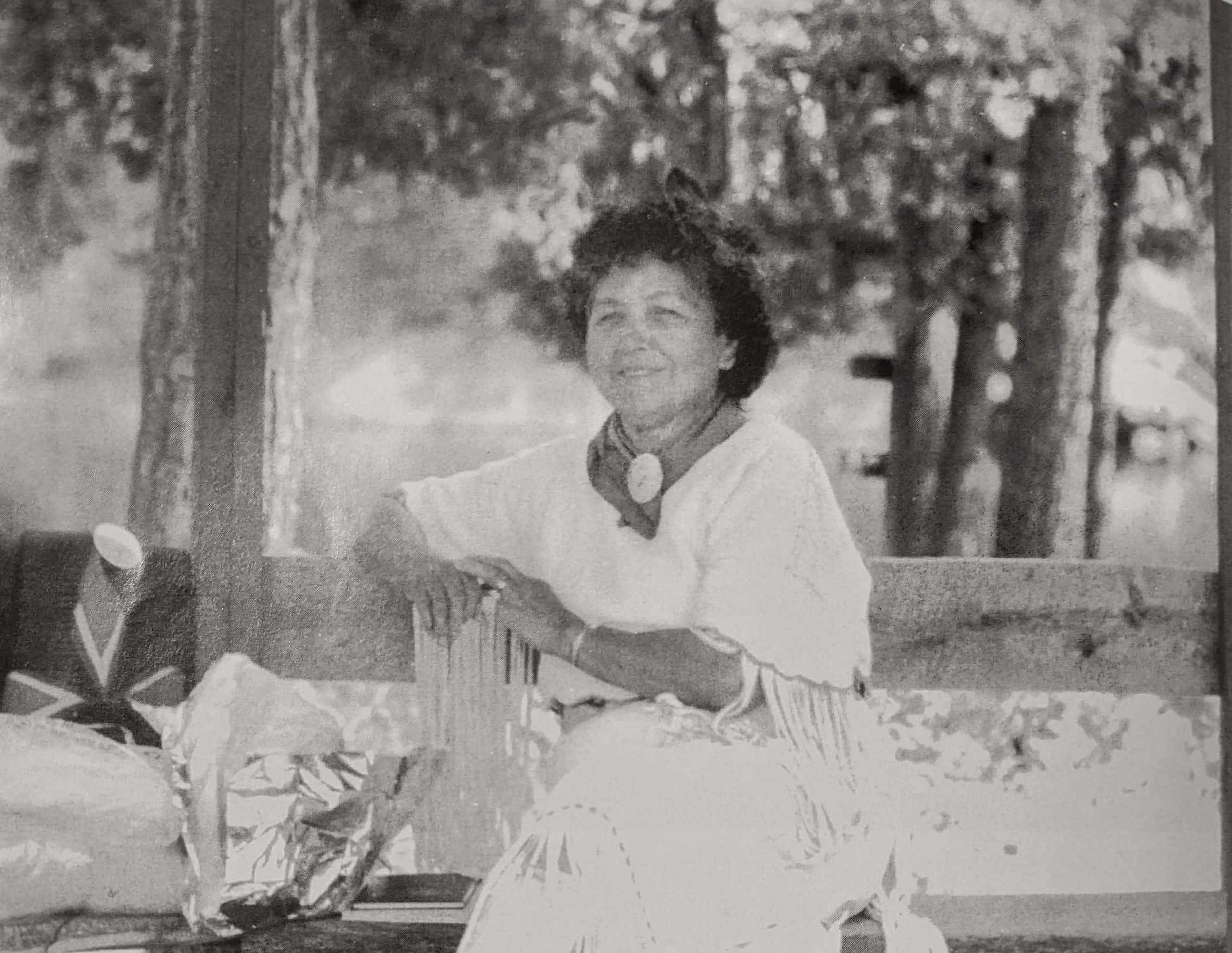In the Presence of Wisdom: Voices of the Land
Taken from the foreword of Voices of the Land, 1993. When the Elders met at the gathering “The Voice of

Adapted from National First Nations Elders Language Gathering, 1993 & Association of Friends, August 1995
Violet’s life story embodies the resilience, cultural commitment, and community engagement inherent in many Indigenous experiences. Departing from her home in 1939 to attend the girls’ residential school in Spanish, she spent a significant part of each year there until 1945. This period marked the beginning of her journey toward cultural preservation, a theme that echoes throughout her life.
Violet’s connection to the land and traditional practices is evident in her work, in the way she raised her children, and in her teachings. Even when she moved away from home, first to Sault Ste. Marie and later to Niagara Falls, she maintained a strong dedication to her family and to her work. Taking night courses in sewing and nurses’ aide training reflected her dedication to personal growth and skill development.
She married Art McGregor in 1952, and they raised nine children together. The summers became a time for teaching her children essential skills, from gardening to berry-picking and preserving, and instilling values of self-sufficiency and sharing. These activities were not only practical but also tied to Indigenous practices, emphasizing a connection to the land and traditional ways of life.
Violet’s commitment to the community extended beyond her family. To make ends meet, she worked various jobs, from being a janitor to making and selling quilts. Active involvement in committees and a 20-year membership on the Parish Council showcased her dedication to community building and improvement.
“We need to work together as Nishnaabek to understand and learn from each other’s wisdom. Either we live together in harmony or we die. We cannot give up our identity. Nations, parents, teachers have to understand and relearn their language, culture and lifestyles of our people. When we are in harmony with culture, the Creator will always be with us.”
National First Nations Elders Language Gathering, 1993
Her role in the Ojibwe Cultural Foundation and chairing the Elders Advisory Council demonstrated her commitment to preserving and passing down Indigenous knowledge. The emphasis on language as a bridge between generations highlights the vital role it plays in cultural continuity. The excerpt from the National First Nations Elders Language Gathering in 1993 underscores the importance of harmony, identity, and the intergenerational transmission of wisdom.
Violet’s reflections on education echo the broader Indigenous perspective on learning. It’s not just about acquiring external knowledge but integrating the best of traditional culture with contemporary education. The plea for preserving the Nishnaabek identity, language, and lifestyle is a call to action for communities, parents, and educators.
In essence, Violet’s life story is a testament to the interconnectedness of community, Indigenous education, and resources. It emphasizes the importance of preserving language, culture, and traditional practices for the well-being of individuals and the collective strength of Indigenous communities. Through her experiences and wisdom, Violet advocates for a harmonious coexistence that embraces both the richness of tradition and the opportunities of the present and future.
Taken from the foreword of Voices of the Land, 1993. When the Elders met at the gathering “The Voice of

Adapted from Association of Friends, August 1995 Art, a lifelong resident of Birch Island, exemplifies commitment and community engagement. Married to
Grandmother’s Voice: Creating opportunities for Indigenous community members to share their teachings, healing practices and traditional handicraft creation with the broader community.
Elevating Indigenous Knowledge and Culture across Halton Region has been the foundation of our organization. Collectively, we continue to serve as a beacon for building awareness and fostering connectedness. Rooted in our Nation’s origins, we are dedicated to enhancing capacity and illuminating the landscape of Indigenous social services and determinants of health. Join us on this transformative journey as we strive to strengthen bonds, raise awareness, and contribute to the well-being of our communities.
Grandmother’s Voice International Business #799454954RC0001


© 2024 All Rights Reserved.